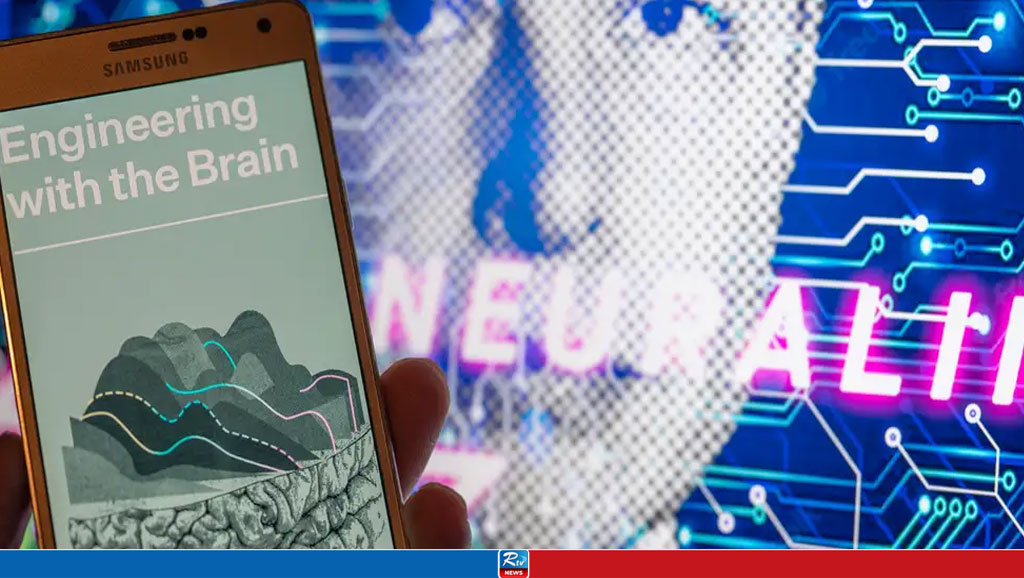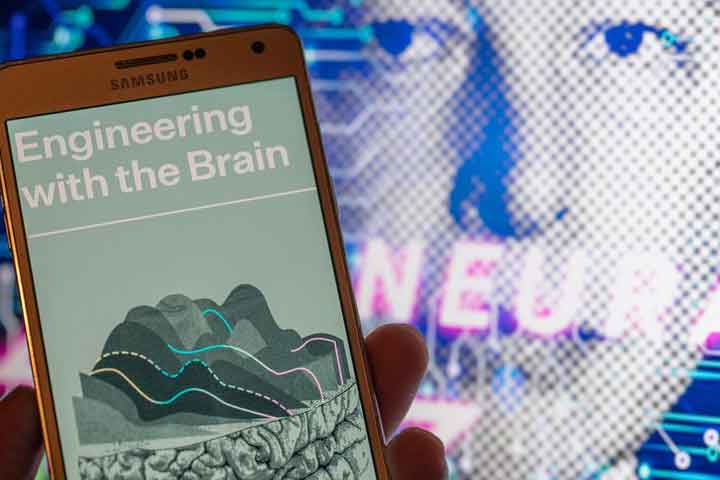Neuralink's telepathy brain chip: How 'weird' is it?
Brain implant devices could have a transformative impact on human health. Now Elon Musk's company Neuralink has tested its implants in a human trial.
Neuralink has implanted its first "brain-computer interface" (BCI) chip inside a human brain, according to the company's co-founder Elon Musk. On January 29, Musk wrote on his social media platform, X, that results were "promising."
It's been eight years in the making: Since it was founded in 2016, the company has been developing a computer chip designed to be implanted into the brain, where it monitors the activity of thousands of neurons.
The chip — called Telepathy — consists of a tiny probe, containing 1,024 electrodes, attached to flexible threads thinner than a human hair. Each electrode records the electrical activity of neurons in the brain, but does not "control" neurons.
Neuralink has said it aims to help patients overcome neurological conditions such as blindness and paralysis.
However, Musk has described other ambitions for the brain chip that are reminiscent of science fiction. "The future is going to be weird,ʺ said Musk in 2020.
As well as treating health issues, Musk has said he wants to link the brain with computers to allow information and memories from deep inside the mind to be downloaded, like in the 1999 science fiction film "The Matrix."
Musk has also said he wants to provide people with "super vision" and achieve human telepathy, which he said would help humanity prevail in a war against artificial intelligence.
Sci-fi or reality?
But are any of Musk's sci-fi ideas feasible? Short answer: no.
ʺWe cannot read people's minds. The amount of information that we can decode from the brain is very limited,ʺ said Giacomo Valle, a neural engineer at the University of Chicago in the United States.
Juan Alvaro Gallego, a brain-computer interface researcher at Imperial College London, agreed, arguing it's hard to imagine BCIs reading our minds in this lifetime.
ʺThe fundamental problem is that we don't really know where or how thoughts are stored in the brain. We can't read thoughts if we don't understand the neuroscience behind them,ʺ Gallego told DW.
Clinical uses of BCIs grounded in reality
Musk first showcased the Neuralink technology in 2019, introducing a pig with a Neuralink chip implanted in its brain and a video of a monkey controlling a pong paddle with its mind.
But the potential for BCIs goes far beyond animals playing games.
Gallego said the technology was first developed to help people paralyzed with spinal injuries or conditions like Locked-in syndrome — when a patient is fully conscious but can't move any part of the body except the eyes — to communicate.
ʺIf you [could] translate their internal communication into words on a computer, it would be life-changing,ʺ said Gallego.
In these sorts of cases, BCIs are designed to record electrical signals from neurons in the motor cortex, then send the signals to a computer where they are displayed as text.
The motor cortex isn't typically thought to be involved in thinking. Instead, it's where instructions to move are sent out to the body, like the tongue and jaw muscle movements for speech.
What the electrodes are really recording is a motor plan — more precisely, the end result of all the processing in different parts of the brain (sensory, linguistic, cognitive) required to move or speak.
So BCIs aren't really recording your thoughts, but rather the brain's plan to move a finger here, a leg there, or to open your mouth to make an "aah" sound.
ʺScientists also showed they can read the motor cortex's intent to draw a letter,ʺ said Gallero. ʺUsing complex modelling [with the connected computer], this allowed paralyzed participants to type 90 characters per minute, which was a breakthrough.ʺ
BCIs help people feel and walk again
Another breakthrough occurred in 2016 when Barack Obama, the US president at the time, shook Nathan Copeland's robotic hand.
Copeland, who was paralyzed after a car accident, felt Obama's handshake as if they were touching skin to skin.
ʺThis demonstrated a different capability of BCIs. Rather than using electrodes to record from the brain and interpret intended movements, they instead stimulated the brain with tiny currents to produce sensation,ʺ said Gallego.
In Copeland's case, a BCI called the Utah array was implanted into his brain to improve the functioning of a disabled part of his nervous system.
The device, produced by a Neuralink rival, was implanted into his sensory cortex and connected with sensors on the end of his robotic hand.
When Copeland shook hands with Obama, those sensors sent signals causing electrodes in the sensory cortex to stimulate the "hand" region of the brain, allowing Copeland to "feel" the president's hand.
More recently, a patient with a spinal cord injury caused by a bike accident was fitted with a brain-spine interface which enabled him to walk naturally again.
The device enabled signals from the brain to connect with motor regions of the spinal cord below the level of the damage, thereby bridging the injury.
These new capabilities of BCIs represent the next generation of deep brain stimulation, a treatment that involves implanting electrodes into areas of the brain to help people with movement disorders.
ʺThese technologies have been around for a while. Deep brain stimulation has been used to help many thousands of people with Parkinson's disease since the 1990s,ʺ said Gallego.
Brain surgery for everyone? Really?
For now, BCIs like Neuralink and the Utah array are only being used in special one-off cases.
ʺAll the clinical applications of BCIs are still at the research stage and not implemented in clinical practice yet,ʺ said Valle.
Neuralink tried to receive approval from US federal drug regulators to test its technology in human trials last year, but suffered a blow when authorities rejected the application, citing major safety concerns. FDA approval was finally granted in May 2023.
The device consists of 96 tiny, flexible probes that must be individually inserted into the brain.
Brain surgery is no joke. Even if the invasive procedure required to wire a BCI up to the brain goes well, the potential for infection or immune ʺrejectionʺ of the device remains long after implantation.
The birth of neuroethics
In the long term, Valle said, BCIs raise "a variety of ethical concerns" that will need to be considered carefully by researchers, companies, funding agencies, regulators and users themselves.
The technology is giving birth to a new field of moral inquiry: neuroethics. It's here where discussions turn more sci-fi.
ʺFor example, what are the consequences of privacy breaches when the data in question relate to people's thoughts? How can we ensure that a lack of access does not exacerbate societal inequity? What happens when this information can be directly input into the brain?" said Valle.
After all, it's the role of science fiction to prepare us for what might come in the future.
Warnings about surveillance and technological control were all there in early 20th-century novels, such as Brave New World and 1984. Have we listened to them?
30 Jan 2024,17:46

















 Live Tv
Live Tv





